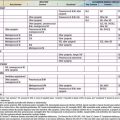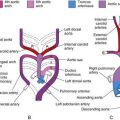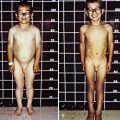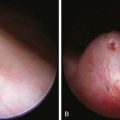Stephen K. Obaro and H. Dele Davies
Yaws is the most prevalent nonveneral treponematosis. It is a contagious, chronic, relapsing infection involving the skin and bony structures caused by the spirochete T. pertenue, which is identical to T. pallidum microscopically and serologically. It occurs in tropical regions with heavy rainfall and annual temperatures ≥27°C (80°F). Almost all cases occur in children in tropical and subtropical countries. It is also referred to as “framboesia,” “pian,” “parangi,” and “bouba.” A high percentage of the population is infected in endemic areas.
T. pertenue is transmitted by direct contact from an infected lesion through a skin abrasion or laceration. Transmission is facilitated by overcrowding and poor personal hygiene in the rain forest areas of the world. The initial papular lesion, which constitutes primary yaws, also described as the “mother yaw,” occurs 2-8 wk after inoculation. This lesion typically involves the buttocks or lower extremities. The papule develops into a raised, raspberry-like papilloma and is often accompanied by regional lymphadenopathy. Healing of the mother yaw leaves a hypopigmented scar. The secondary stage lesions can erupt anywhere on the body before or after the healing of the mother yaw and may be accompanied by lymphadenopathy, anorexia, and malaise. Multiple cutaneous lesions (daughter yaws, pianomas, or framboesias) appear, spread diffusely, ulcerate, and are covered by exudates containing treponemes. Secondary lesions heal without scarring. Recurrent lesions are common within 5 yr after the primary lesion.
The lesions are often associated with bone pain resulting from underlying periostitis or osteomyelitis, especially of the fingers, nose, and tibia. The initial period of clinical activity is followed by a 5-10 yr period of latency. The appearance of tertiary stage lesions develops in approximately 10% of infected patients, with onset typically at puberty with solitary and destructive lesions. These lesions occur as painful papillomas on the hands and feet, gummatous skin ulcerations, or osteitis. Bony destruction and deformity, juxta-articular nodules, depigmentation, and painful hyperkeratosis (“dry crab yaws”) of the palms and soles are common.
The diagnosis is based on the characteristic clinical manifestations of the disease in an endemic area. Dark-field examination of cutaneous lesions for treponemes and both treponemal and nontreponemal serologic tests for syphilis, which are positive because of cross reactivity, are used to confirm the diagnosis. Differential diagnosis includes other conditions with similar cutaneous manifestations such as eczema, psoriasis, excoriated chronic scabies, tungiasis, leishmaniasis, and verucae.
Treatment of yaws consists of a single dose of benzathine penicillin G (1.2 million U IM for adults and 0.6 million U for children <10 yr) for index patients and all contacts. Patients allergic to penicillin may be treated with erythromycin, doxycycline, or tetracycline at appropriate doses for venereal syphilis (Chapter 210). Treatment cures the lesions of active yaws, renders them noninfectious, and prevents relapse. Family members, contacts, and patients with latent infection should receive the same dose as those with active disease. Eradication of yaws from endemic areas may be accomplished by treating the entire population with penicillin.






